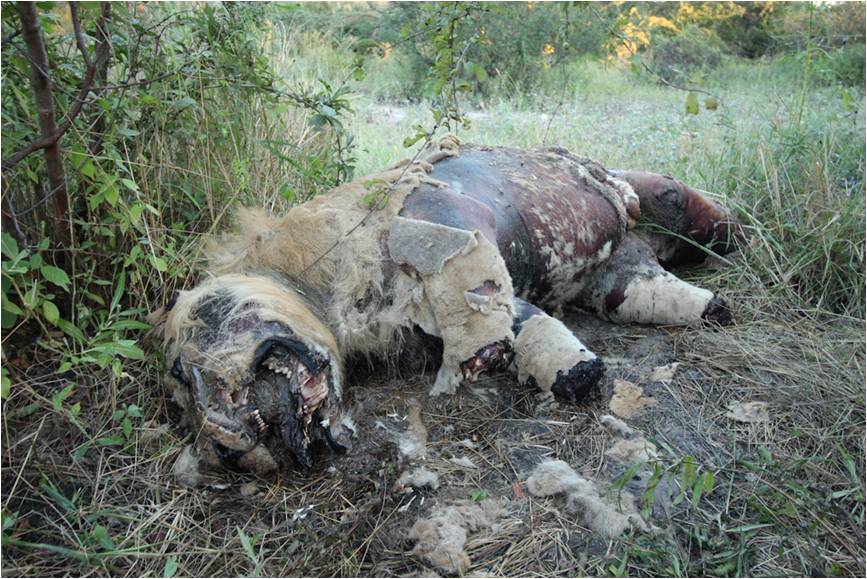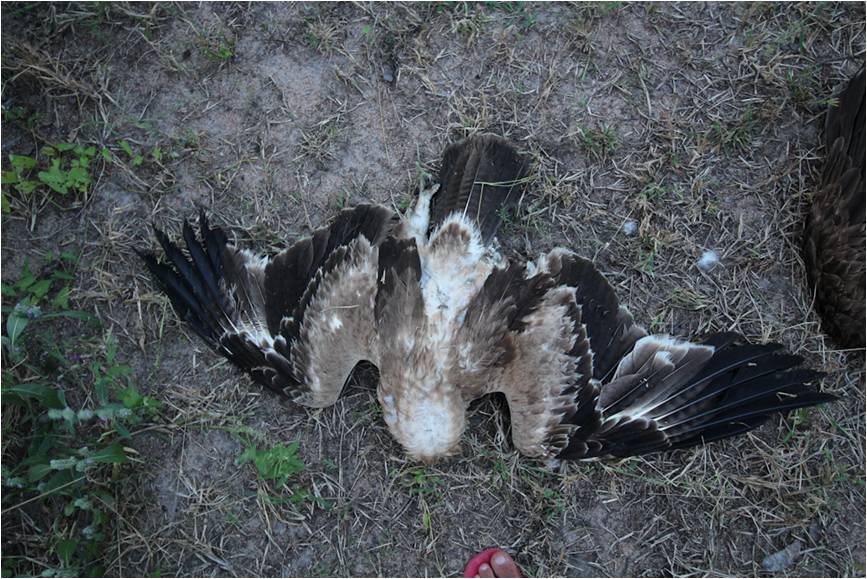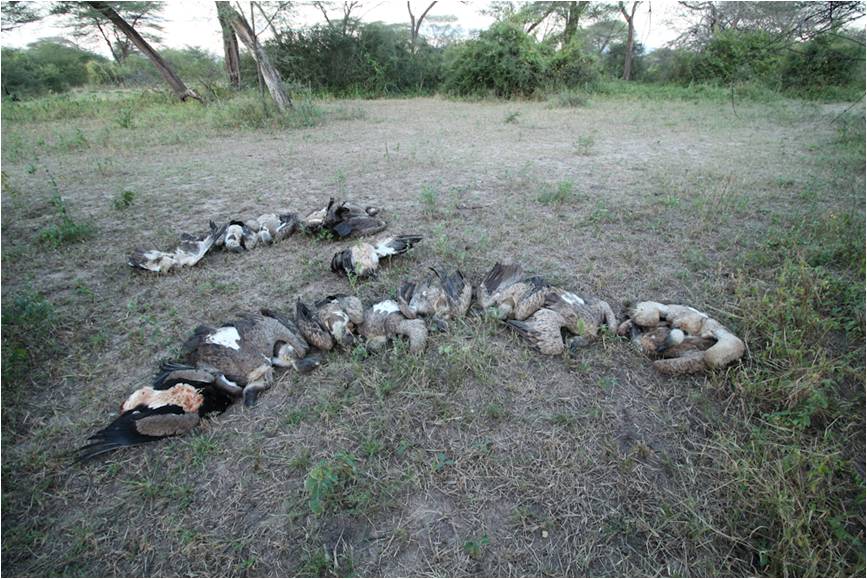News
Ruaha Carnivore Project loses lion to poisoning
Unfortunately, the WildCRU team at our Ruaha Carnivore Project recently discovered a very significant poisoning event in one of the local villages, following an attack by lions on some cattle. One cow was killed, and the carcass was poisoned and left out in the bush. Project staff heard about the incident and went to investigate, and found not only the carcass of a male lion, but also carcasses of a spotted hyaena, a black-backed jackal, a hooded vulture, a tawny eagle, two bateleur eagles, and, shockingly, 55 white-backed vultures. Both the white-backed vultures and the hooded vultures are critically endangered, and have declined severely over recent years, due mainly to incidents such as this.
Incidental poisoning of scavengers is very common when people attempt to poison carnivores, and is one of the main reasons why stopping depredation and retaliatory poisonings is so urgent. Some body parts had been taken, presumably for local use and sale – this included the head and neck of the tawny eagle, the feet of the bateleur, and the paws and teeth of the lion. There seems to be a growing market for lion parts and tourists sometimes buy lion claws and teeth. WildCRU is working hard, both in Ruaha and in many other study sites, to reduce carnivore attacks, to give people real benefits from live wildlife rather than dead ones, and to reduce retaliatory killing.
Read more about Amy Dickman and the Ruaha Carnivore Project
In other news, this is the latest update from our Ruaha Carnivore Project team in Tanzania, who have been battling El Nino rains to combat carnivore attacks and lion hunts: February 2016 Ruaha Update available here (1MB, PDF)
-
 Adult male lion (photos by Leejiah Dorward)
Adult male lion (photos by Leejiah Dorward) -
 Tawny eagle
Tawny eagle -
 Vultures at poisoning event
Vultures at poisoning event





